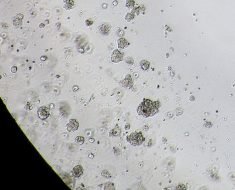TOPLINE:
Among the 3188 people with type 2 diabetes who were adherent to their tirzepatide (Mounjaro, Lilly) regimen in four pivotal trials of the agent, a quarter achieved at least a 15% cut from their baseline body weight after 40–42 weeks of treatment, and researchers found seven baseline variables that were significantly linked with a higher incidence of this level of weight loss.
“These findings help inform which people with type 2 diabetes are most likely to achieve greater body weight reduction with improved cardiometabolic risk factors with tirzepatide,” say the authors.
METHODOLOGY:
-
Investigators conducted a post hoc analysis of data collected from a total of 3188 people with type 2 diabetes who had been adherent to their assigned tirzepatide regimen for 40–42 weeks in any one of four pivotal trials of the agent: SURPASS-1, SURPASS-2, SURPASS-3, and SURPASS-4.
-
The researchers aimed to identify predictors of a reduction in body weight of at least 15% with tirzepatide treatment at any of the three tested doses ― 5 mg, 10 mg, or 15 mg ― which were administered by subcutaneous injection once a week.
-
All four trials that provided data prohibited concurrent therapy that would promote weight loss, and the people included in the analysis did not receive any rescue medications for controlling glycemia.
-
The primary efficacy measure in all four studies was the ability of tirzepatide to improve glycemic control (measured by A1c level) compared with placebo, semaglutide (Ozempic) 1 mg SC once weekly, insulin degludec (Tresiba, Novo Nordisk), or insulin glargine (Basaglar, Lilly).
TAKEAWAY:
-
Among the 3188 people who remained adherent to their tirzepatide regimen for 40–42 weeks, 792 (25%) experienced a weight reduction of at least 15% from baseline.
-
Multivariate analysis of baseline covariates showed that these seven factors were significantly linked with ≥15% weight loss: higher tirzepatide dose, being female, being of White or Asian race, being of younger age, undergoing treatment with metformin, having better glycemic control (based on lower A1c and lower fasting serum glucose), and having lower non-high-density lipoprotein cholesterol level.
-
During follow-up, achievement of at least a 15% cut in baseline body weight was significantly associated with greater reductions in A1c, fasting serum glucose level, waist circumference, blood pressure, serum triglyceride level, and serum level of the liver enzyme alanine transaminase.
IN PRACTICE:
“These findings may provide valuable information to clinicians and people with type 2 diabetes regarding the likelihood of achieving substantial body weight reduction with tirzepatide, and also help to signal likely improvements to be seen in a range of cardiometabolic risk parameters with tirzepatide-induced weight loss,” the authors concluded in their report.
SOURCE:
The study was largely run by researchers who are employees of Lilly, the company that markets tirzepatide (Mounjaro). It was published in Diabetes Care.
LIMITATIONS:
-
The analysis was post hoc.
-
The follow-up was limited.
-
The analysis focused entirely on baseline parameters as potential predictors of weight loss magnitude.
DISCLOSURES:
The study was funded by Eli Lilly, the company that markets tirzepatide (Mounjaro) and that sponsored the SURPASS trials. Six authors are employees of Lilly, one is a contractor for Lilly, and the two remaining authors have had financial relationships with Lilly and with several other companies.
Mitchel L. Zoler is a reporter with Medscape and MDedge based in the Philadelphia region. @mitchelzoler
For more diabetes and endocrinology news, follow us on X and Facebook. You can also follow Medscape on Instagram, YouTube and Linkedin.
Source: Read Full Article





